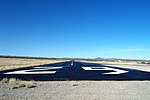La Casa del High Jinks

La Casa del High Jinks is a historic house located on High Jinks Ranch in Pinal County, Arizona, southeast of the community of Oracle. The ranch was founded in 1912 by Buffalo Bill Cody, who ran a gold mine at the site. After Cody's death, the ranch was seized for unpaid taxes and subsequently sold to Lewis Claude Way. Way built the Pueblo style ranch house on the property, which he completed in 1928. The house is listed on the National Register of Historic Places. High Jinks Ranch is surrounded by the Coronado National Forest and is a gateway to the Arizona Trail, an 800-mile (1,300 km) long trail that traverses the north–south length of Arizona. The ranch has vast views of the Galiuro Mountains and Bassett Peak (elev. 7,663 feet (2,336 m)). The closest town to the ranch is Oracle, a 20-minute drive away. Situated in the foothills of the north slope of the Santa Catalina Mountains, Oracle is well known for Biosphere 2, a large-scale experimental apparatus housing seven model ecosystems. Its mission was a two-year closure experiment with a crew of eight humans ("biospherians"). Long-term it was seen as a precursor to gain knowledge about the use of closed biospheres in space colonization. In addition to housing Biosphere 2, Oracle is remote enough to have received an International Dark Sky Park designation in 2014 from the International Dark-Sky Association. Oracle is far enough away from light pollution for numerous celestial bodies to become visible. The town has some of the darkest nights in the continental United States. The ranch is a one-hour drive from Tucson and Saguaro National Park, a two-hour drive from Phoenix, a 2.5-hour drive from Tombstone, and 3 hours from Bisbee.
Excerpt from the Wikipedia article La Casa del High Jinks (License: CC BY-SA 3.0, Authors, Images).La Casa del High Jinks
South Highjinks Road,
Geographical coordinates (GPS) Address Nearby Places Show on map
Geographical coordinates (GPS)
| Latitude | Longitude |
|---|---|
| N 32.571388888889 ° | E -110.73833333333 ° |
Address
South Highjinks Road
Arizona, United States
Open on Google Maps










